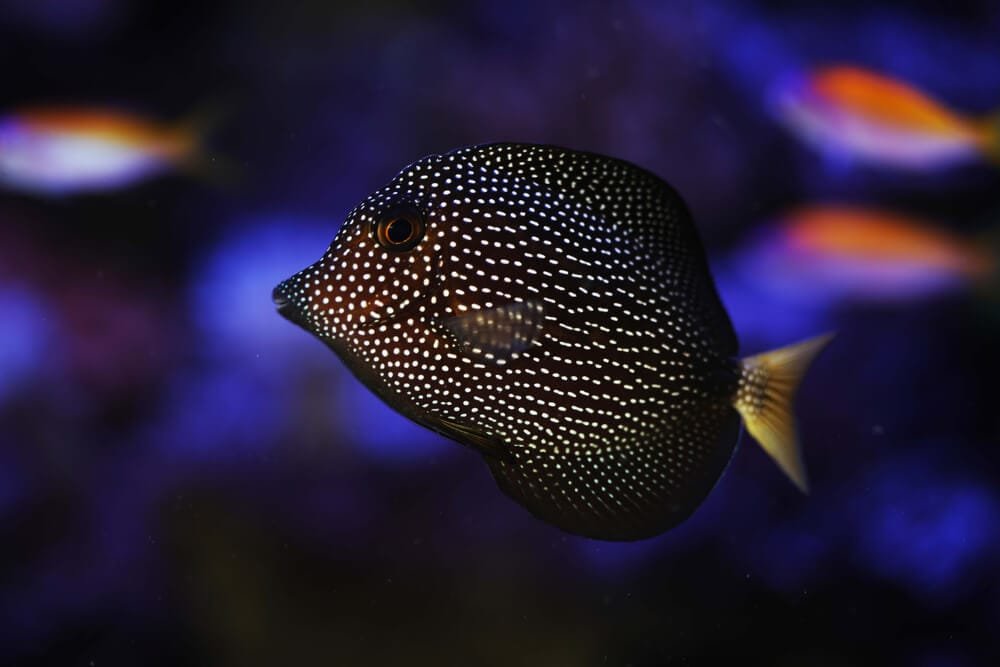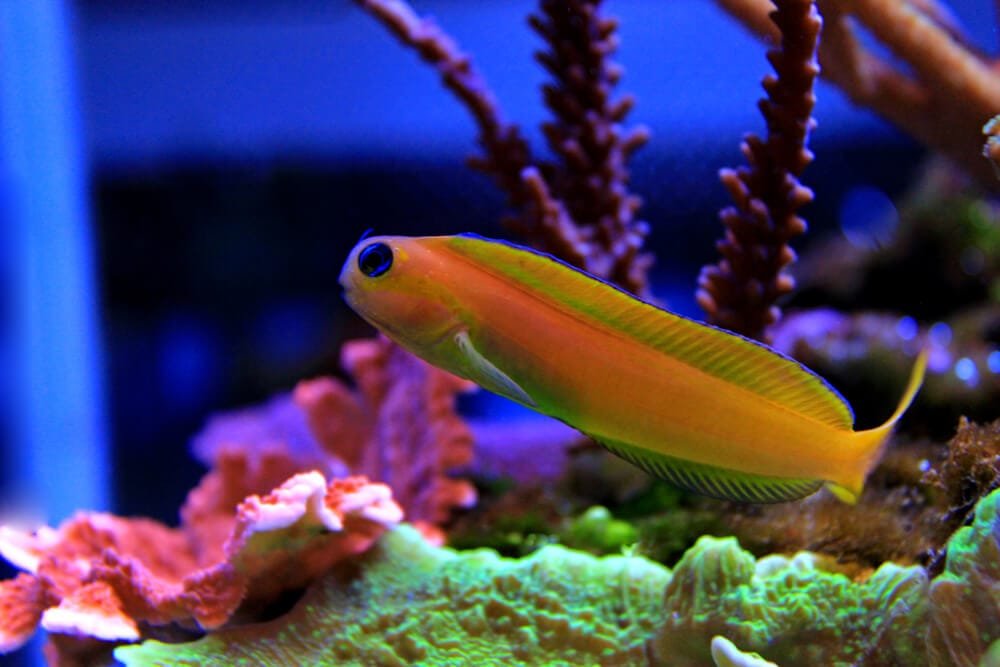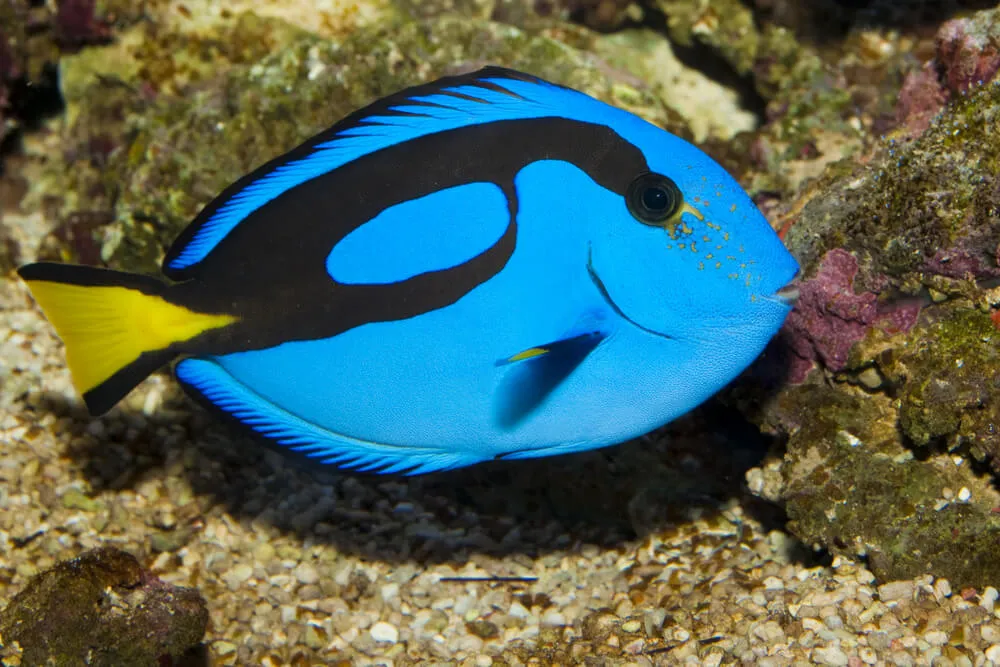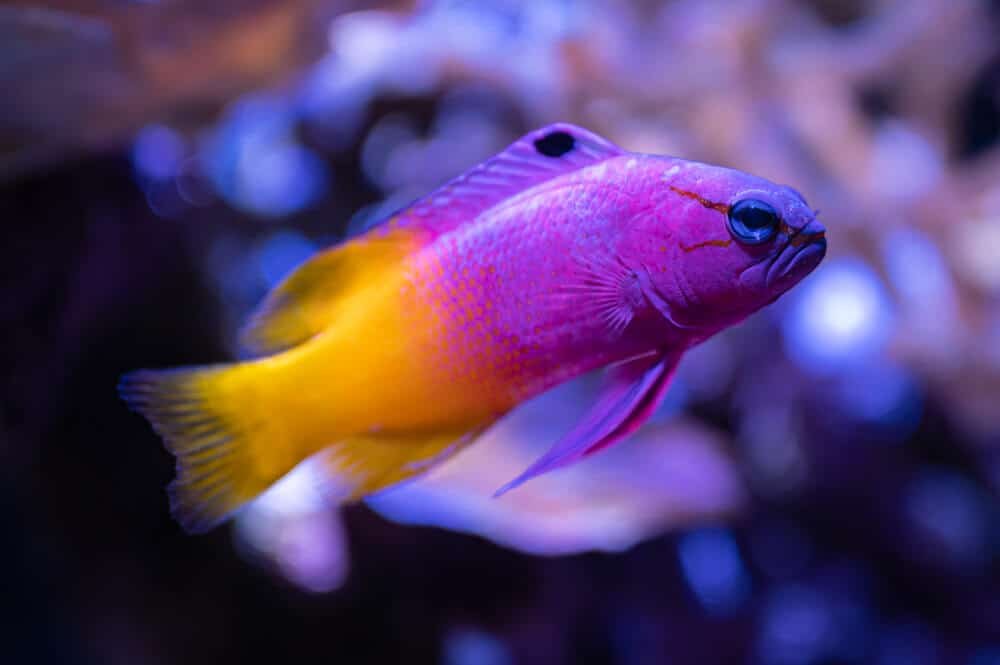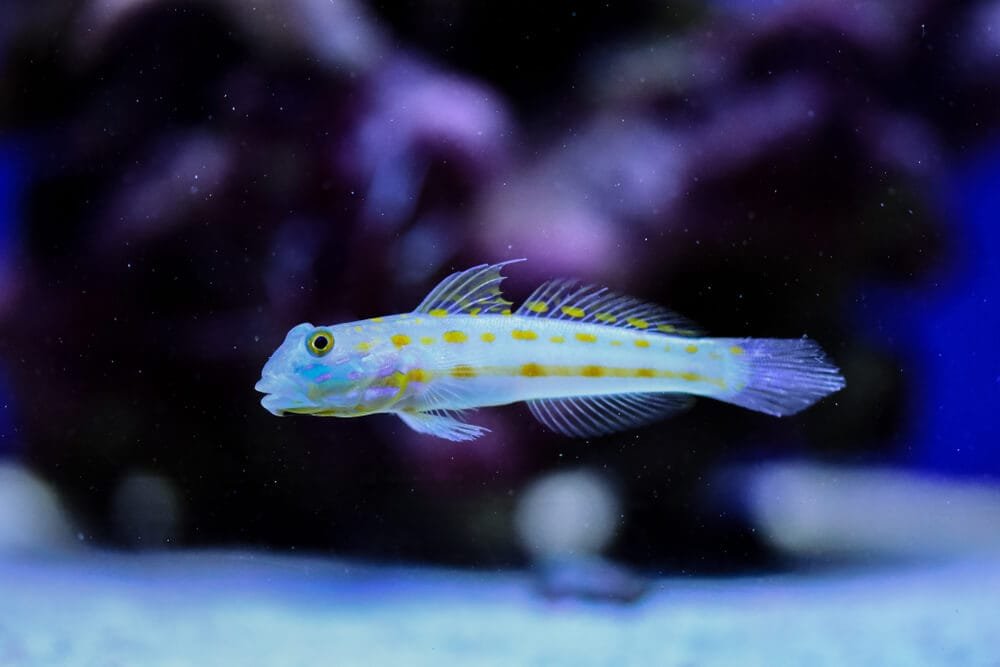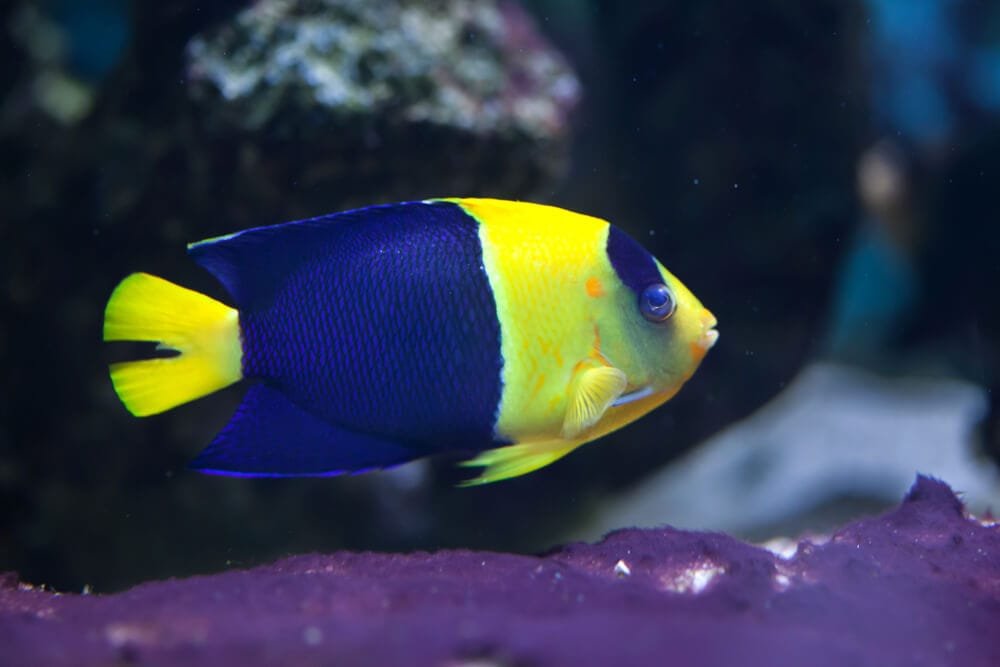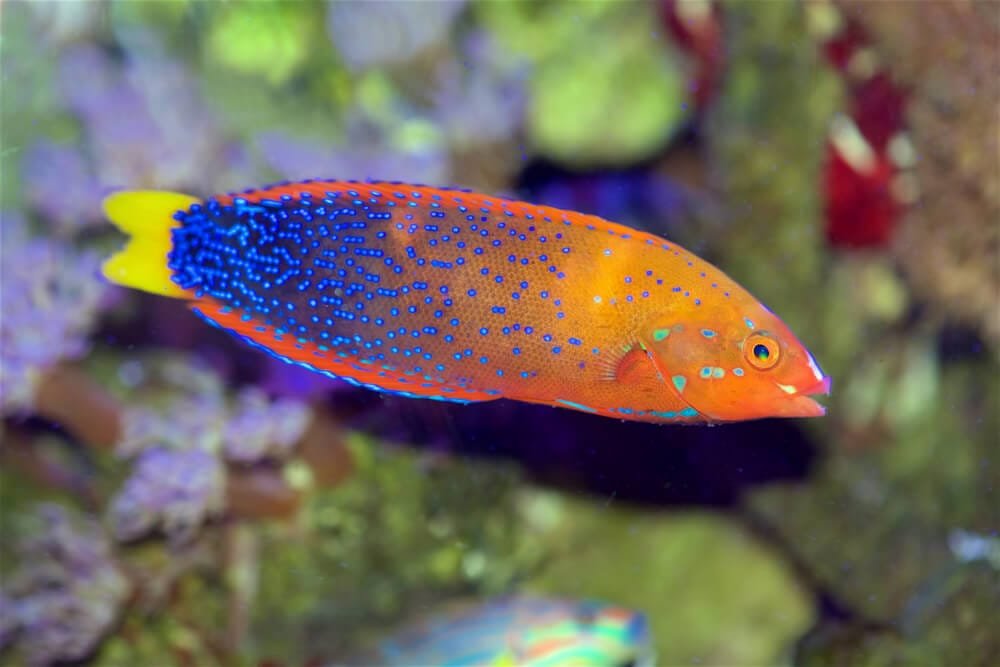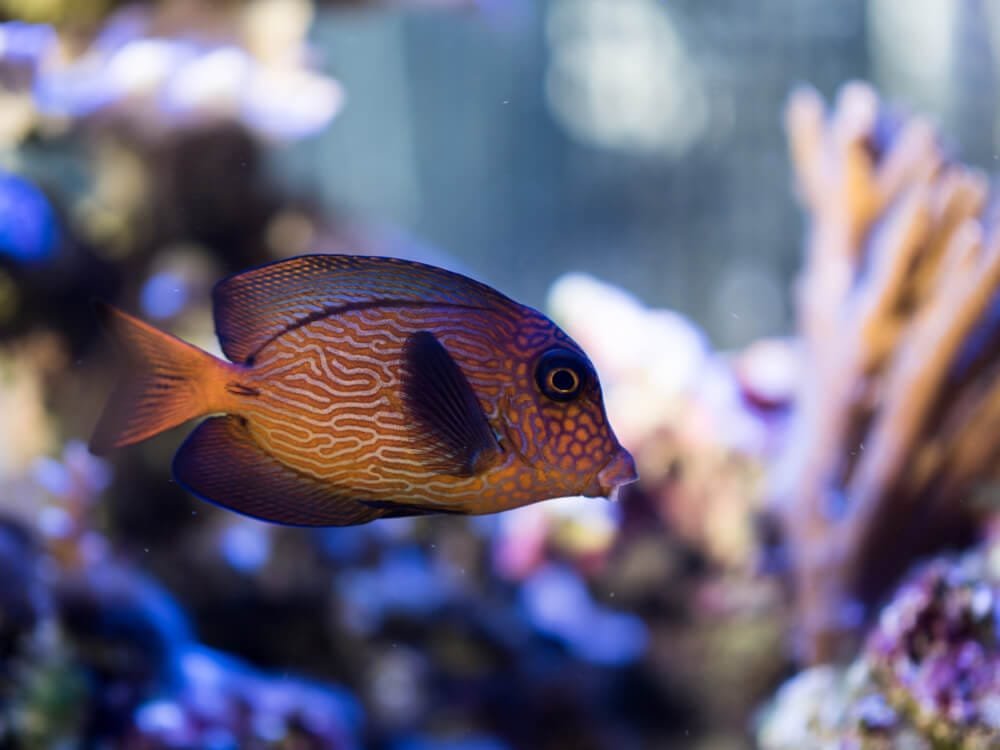Domino Damsel Fish: Care Tips and Tank Compatibility
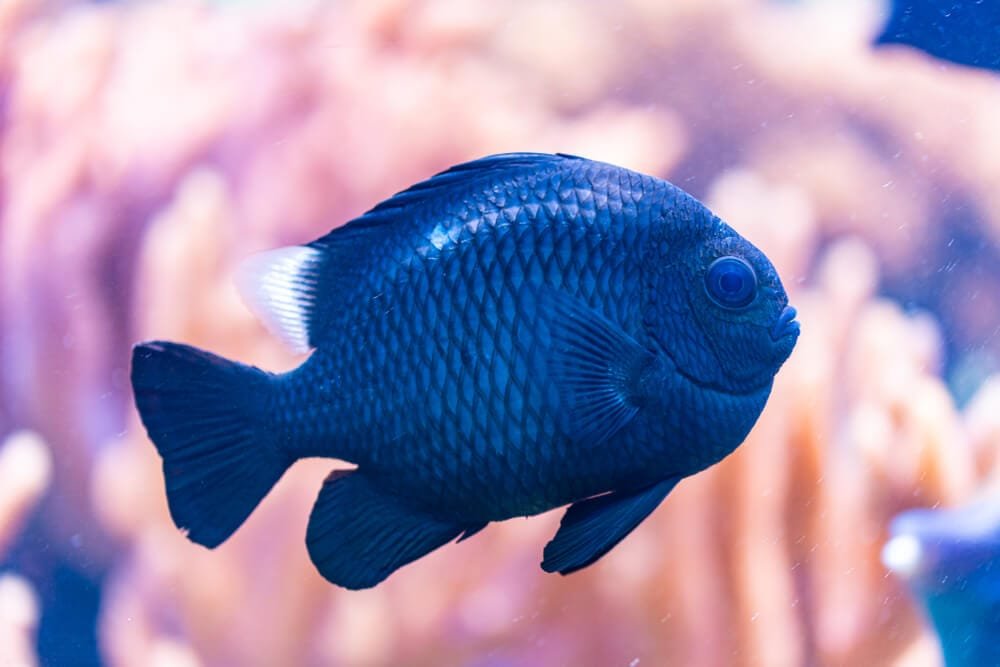
Imagine a world where small, colorful fish dance through coral reefs, captivating viewers with their vibrant tails and graceful movements. In this underwater paradise, the Domino Damsel, with its striking black and white markings, takes center stage. This small but energetic fish is known for its playful nature and ability to bring a touch of intrigue to the already stunning marine landscape. Dive into the fascinating world of the Domino Damsel and discover the secrets behind its captivating allure.
What is a Domino Damsel?
A Domino Damsel, also known as a Dascyllus Trimaculatus, is a small, colorful fish that belongs to the damselfish family. These fish are popular among aquarium enthusiasts due to their striking appearance and relatively easy care requirements. Domino Damsels are native to the Indo-Pacific region. They are found in coral reefs, making them a great addition to a marine aquarium.
Appearance
Domino Damsels are known for their stunning black and white coloration, which resembles the pattern on a domino tile. They have a sleek, oval-shaped body, with a black anterior and a white posterior. The contrast between the two colors is beautifully striking, making them a captivating sight in any aquarium. These fish can grow up to 3 inches in length, making them a relatively small species suitable for smaller tanks.
Habitat
In the wild, Domino Damsels are typically found in the shallow waters of coral reefs. They prefer areas with plenty of hiding spots, such as crevices and coral formations. The thoughtfully designed aquarium should mimic their natural habitat, providing them with caves, live rock, and coral structures where they can seek refuge and feel secure.
Behavior
Domino Damsels are known for their energetic and somewhat territorial behavior. They are active swimmers, constantly exploring their environment and patrolling their territory. These fish can be quite aggressive, especially when defending their space or during feeding time. However, with proper tank setup and suitable tankmates, their aggression can be managed effectively.
Types of Domino Damsels
There are several color variations of Domino Damsels available in the aquarium trade. While the black and white pattern is the most common, there are also blue, yellow, and even black variations that enthusiasts may find appealing.
Blue Domino Damsel
The Blue Domino Damsel is a breathtaking variant that adds a pop of vibrant color to any aquarium. This variation displays a stunning blue hue complementing the black and white pattern, creating a striking contrast that is visually captivating.
Yellow Domino Damsel
The Yellow Domino Damsel, as its name suggests, sports a bright yellow body with the characteristic domino pattern in black. This variation is highly sought after for its vibrant and cheerful appearance, making it a popular choice for aquarium enthusiasts.
Black Domino Damsel
The Black Domino Damsel is a unique variation that deviates from the traditional black and white coloration. These fish have a predominantly black body, with the domino pattern appearing as white spots or patches. The contrast between the black background and the white spots creates a mesmerizing effect, making the Black Domino Damsel a captivating addition to any aquarium.
Feeding Habits of Domino Damsel
Domino Damsels are omnivorous and have a relatively diverse diet in the wild. To ensure their optimal health and longevity in captivity, it is important to replicate their natural feeding habits as closely as possible.
Diet
These fish primarily feed on a combination of small invertebrates and plankton, which can be replicated in a home aquarium through a varied diet. High-quality marine pellets, flakes, and frozen foods such as brine shrimp and mysis shrimp should be the main components of their diet. It is also beneficial to offer occasional live foods to mimic their natural feeding behavior and stimulate their hunting instincts.
Feeding Behavior
Domino Damsels are active feeders and exhibit an aggressive feeding behavior. They will eagerly swim to the surface to grab food and vigorously swim around the tank in search of food particles. It is important to ensure that there is no competition for food among tankmates, as these fish can be territorial during feeding time.
Reproduction and Life Cycle
Understanding the reproductive behavior and life cycle of Domino Damsels can be fascinating for aquarium enthusiasts looking to delve deeper into their care.
Courtship and Mating
During courtship, the male and female Domino Damsels engage in intricate dance-like movements, displaying their vibrant colors and posturing to attract a mate. Once the pair has formed, they will lay their eggs on a flat surface, often a coral or rock formation, and guard them vigilantly against any potential threats.
Egg Development
The eggs of Domino Damsels typically hatch within a few days, depending on the water temperature. Once hatched, the fry are left to fend for themselves and will quickly start feeding on small organisms in the water column. It is important to note that the reproduction of Domino Damsels may be challenging to achieve in a home aquarium, as the suitable conditions and pre-requisite pairing may be difficult to replicate.
Juvenile Stage
The juvenile Domino Damsels will exhibit similar behavior to their adult counterparts, albeit on a smaller scale. These young fish will progressively grow and develop their striking coloration, adding a vibrant touch to the aquarium. Providing appropriate hiding spots and a suitable diet will ensure their successful transition to adulthood.
Maintenance in Aquariums
To create a suitable and thriving environment for Domino Damsels, it is essential to consider their tank size, water parameters, and compatibility with tankmates.
Tank Size and Environment
Domino Damsels can be comfortably housed in a tank as small as 20-30 gallons, making them suitable for smaller marine setups. However, it is important to provide sufficient swimming space and hiding spots to replicate their natural habitat. Decorative caves, live rock structures, and coral formations can create a visually appealing and functional environment for these fish.
Water Parameters
Maintaining stable water parameters is crucial for the overall health and well-being of Domino Damsels. The ideal temperature for these fish ranges between 74-78°F (23-26°C), with a pH level between 8.1-8.4. It is important to monitor water quality regularly and perform necessary water changes to remove any accumulated toxins.
Tankmates
Selecting suitable tankmates for Domino Damsels should be done carefully to avoid aggression and territorial conflicts. Peaceful and similarly-sized fish, such as other damselfish species, clownfish, and gobies, can coexist peacefully with Domino Damsels. It is important to avoid housing them with larger and more aggressive fish, as this may lead to stress and aggression.
Common Health Issues
While Domino Damsels are generally hardy and resilient, there are some common health issues to be aware of to ensure their optimal well-being in an aquarium setting.
Diseases
Domino Damsels can be susceptible to various diseases commonly found in marine aquariums, such as ich (white spot disease), velvet disease, and bacterial infections. Regular monitoring of water quality, proper quarantine procedures for new additions, and a balanced diet can help prevent or minimize the occurrence of these diseases.
Stress Factors
Stress can significantly impact the health of Domino Damsels, leading to a weakened immune system and increased susceptibility to diseases. Common stress factors include inappropriate tankmates, overcrowding, inadequate hiding spots, and sudden changes in water parameters. Providing a stress-free environment with proper care and suitable tankmates will ensure the well-being of these fish.
Benefits of Keeping Domino Damsels
Keeping Domino Damsels in a home aquarium can be a rewarding experience for a variety of reasons.
Colorful Addition to Aquarium
Their striking black and white coloration, along with variations such as blue, yellow, and black, can add a vibrant and visually captivating element to any marine aquarium. These fish can serve as a centerpiece and draw attention with their dynamic presence.
Complements Other Fish
Depending on the choice of tankmates, Domino Damsels can coexist peacefully with a variety of other fish species. Their energetic behavior and stunning coloration complement the overall dynamics of the aquarium and create an aesthetically pleasing and harmonious environment.
Low Maintenance
Domino Damsels are known for their relatively low maintenance requirements. It makes them an ideal choice for both beginner and experienced aquarium enthusiasts. They are hardy, resilient, and can adapt to a wide range of water parameters, making them a fuss-free addition to any aquarium setup.
Challenges of Keeping Domino Damsels
While there are many benefits to keeping Domino Damsels, it is important to be aware of and address the challenges that come with caring for these fish.
Aggression Towards Other Fish
Domino Damsels can display aggressive behavior, especially during territorial disputes or when feeding. It is essential to carefully select tankmates with similar size and temperament to avoid any conflicts. Providing sufficient hiding spots and monitoring their interactions will help maintain a harmonious aquarium environment.
Territorial Behavior
These fish are naturally territorial and will establish and defend their own space within the tank. It is important to provide ample hiding spots and visual barriers to prevent excessive aggression. Ensuring that each fish has its own territory will help alleviate confrontations.
Compatibility with Tankmates
When selecting tankmates for Domino Damsels, compatibility is crucial. Some fish species may not tolerate the aggression or territorial behavior of Domino Damsels, leading to stress and potential harm. Researching the temperament and size requirements of potential tankmates beforehand will help establish a harmonious tank community.
Breeding Domino Damsels in Captivity
Breeding Domino Damsels in captivity can be a rewarding endeavor for experienced aquarium enthusiasts. However, it requires careful preparation and adherence to specific breeding techniques.
Selecting Breeding Pairs
To successfully breed Domino Damsels, it is crucial to select suitable breeding pairs. This involves observing the behavior and compatibility of potential pairs, ensuring they display courtship behavior, and have compatible temperaments.
Breeding Techniques
Creating the optimal conditions for breeding Domino Damsels involves providing suitable nesting sites, such as flat rocks or coral formations, and maintaining stable water parameters. The pairs should be introduced to a separate breeding tank, where they can lay their eggs and guard them against potential predators.
Caring for Fry
Once the eggs have hatched, it is vital to provide appropriate food for the fry, such as rotifers or small planktonic organisms. The fry will gradually grow and develop their characteristic coloration. It is important to separate the juveniles from adult fish to prevent aggression and cannibalism.
Conclusion
Domino Damsels are an alluring addition to any marine aquarium, with their striking black and white coloration and energetic behavior. While they can be challenging at times due to their aggressive nature, the benefits of keeping these fish, such as their colorful appearance and low maintenance requirements, outweigh the challenges. By understanding their habitat, feeding habits, and compatibility with tankmates, enthusiasts can provide these beautiful fish with a thriving and harmonious environment in their home aquariums.
